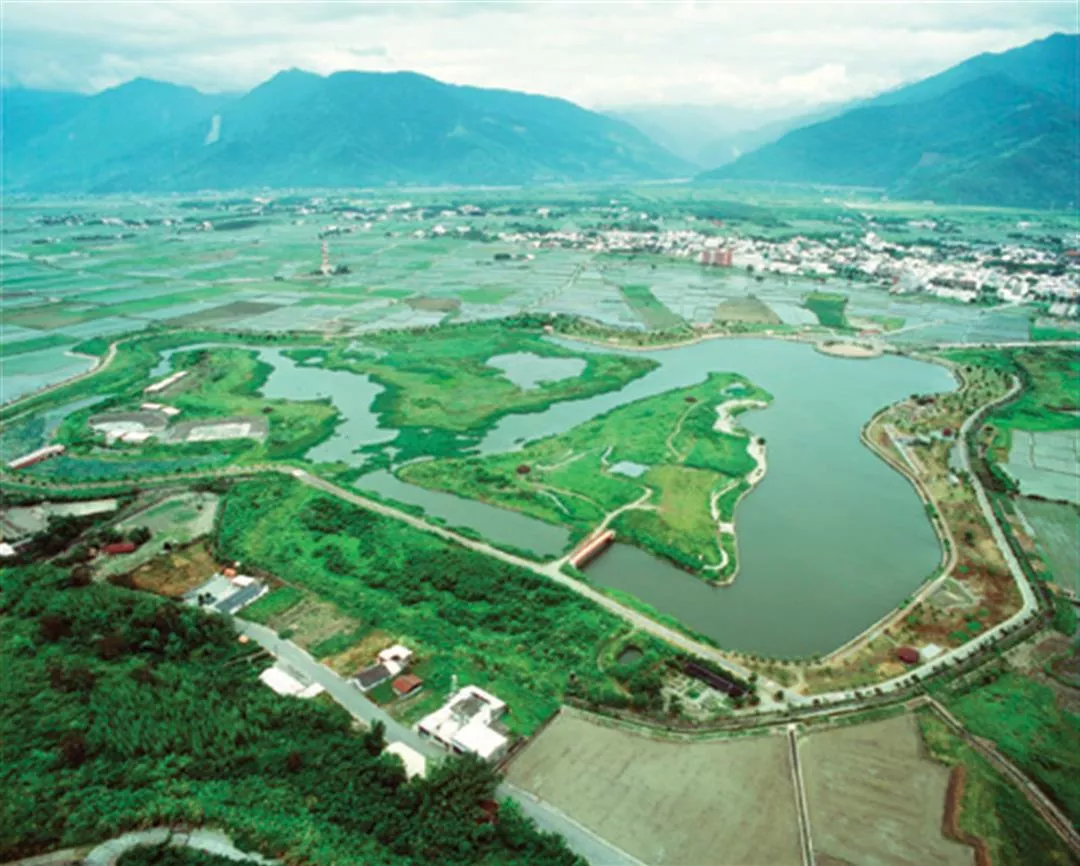Using the wetlandsSo-called wetlands mark the areas where water and land meet. These areas are often deluged by tides and floods, and include freshwater and saltwater swamps, estuaries, ponds, and sinks.
Wetlands have long been treated as worthless land where weeds flourish. However, river overflow and repeated washings carry mud and nutrients, making the earth particularly fecund. "Why do human beings go where the rushes grow? The reason is here," explains Hsieh Hwey-lian, a research fellow in the Research Center for Biodiversity (RCBAS) at Academia Sinica.
After Aborigines had fished and hunted around Tapo Lake, Chinese and Japanese came to the area. They began to clear the land, drain the water, and build embankments to create land suitable for farming and fishing. As land was reclaimed from water, the wetlands along the shores of the lake were quickly lost.
Around 1975, the rising level of the water in Tapo Lake during typhoons frequently led to severe flooding of homes and farms along the shore. The government therefore constructed a large drainage ditch to divert the floodwaters. Aggravated by the large volume of silt carried into the lake over many years of typhoons, and farmers reclaiming land for cultivating crops, the lake's size shrank in the 1990s from its original 55 hectares to just two! Tapo Lake had seemingly evaporated from Chihshang, and for close to ten years afterwards, people lost their attachment to Tapo Lake.
"The ancients said that you have to be able to appreciate the different characteristics of different land. But humans are accustomed to seeking dryness, insisting on drying out wetlands, which naturally drains the life out of them," says RCBAS research fellow Chen Chang-po.
In 1985, as part of a Taitung County Government plan to develop Tapo Lake into a scenic and recreational area, land occupied by farmers was reclaimed, so that the process of dredging out sludge could be begun. From 1992 to 1998, the Chihshang Township Office obtained more than NT$100 million in funding, making plans for a Tapo Lake Scenic Area that would occupy 28 hectares. After more than ten years of "construction," the unfortunate Tapo Lake had been all but ruined.
To make it easier to control access and collect fees, the lake was enclosed by a red brick wall. And to stabilize the lake's water level, the entire shore was fortified with an embankment built of rocks and concrete. In order to expand the recreational options, the bottom of the lake was dredged, and a total of 600,000 cubic meters--the equivalent of 40,000 15-ton truckloads--of outside earth were brought in and unloaded into Tapo Lake to form two artificial islands.
On these islands, paved bike lanes were laid, and even more absurdly, a basketball court was built. The recreational area also had a campground, metal-roofed huts for barbecues, an outdoor stage, a children's playground, and an arched concrete bridge and red steel bridge that ran out to the islands. In all, the area covered by manmade facilities was more than one third that of the actual lake area.
But as the physical facilities appeared, the townspeople, who still held in their memories the past natural splendor of Tapo Lake, became increasingly resistant to this reconstructed "artificial" Tapo Lake.
The reconstruction of Tapo Lake, together with a lakeside parking lot that cost NT$60 million and used steel-reinforced concrete to cover a 450-meter long canal, were both selected by the media as among Taiwan's worst public works projects in 2004, arousing the townspeople's opposition.
Besides damaging the appearance of the lake, inappropriate construction methods robbed the area's abundant flora and fauna of their habitat. The concrete embankment that replaced soil along the periphery of the lake usurped the most important part of the wetlands, the transition zone, preventing the life there from being able to reproduce. The large-scale dredging of the lake bottom removed the seeds of aquatic plants, and the excessive water depth that resulted from the dredging made it inhospitable to plants. All this was exacerbated by the influx of agricultural wastewater, which only quickened the disappearance of the lake's bountiful plant and animal life. It was then that the townspeople were shocked to find they had "lost" Tapo Lake.
There was no longer any sign of the goby fish, loaches, swamp eels, catfish, crucian carp, and cherry shrimp that had once swum the lake's water, of aquatic plants like the lotus flowers, duckweed, reeds, water willows, cattails, denseflower knotweed, and wild arrowhead that had once floated on the water surface, or of more than 100 species of birds, including moorhens, white-breasted waterhens, Baillon's crake, and Formosan pheasant.
What proliferated instead was the non-native water hyacinth that kills off ponds. It had grown into large mounds after being dredged up by excavators hired for more than NT$1 million. These plants were taking over the lake's surface with amazing speed, squeezing out the plants that originally grew in the lake, while also preventing the fish and shrimp underwater from getting any sunlight.

Influenced by misguided notions about how to develop the area, Tapo Lake was at one point spoiled by too many concrete structures, robbing it of its vitality. The picture shows the lake before the recent restoration.